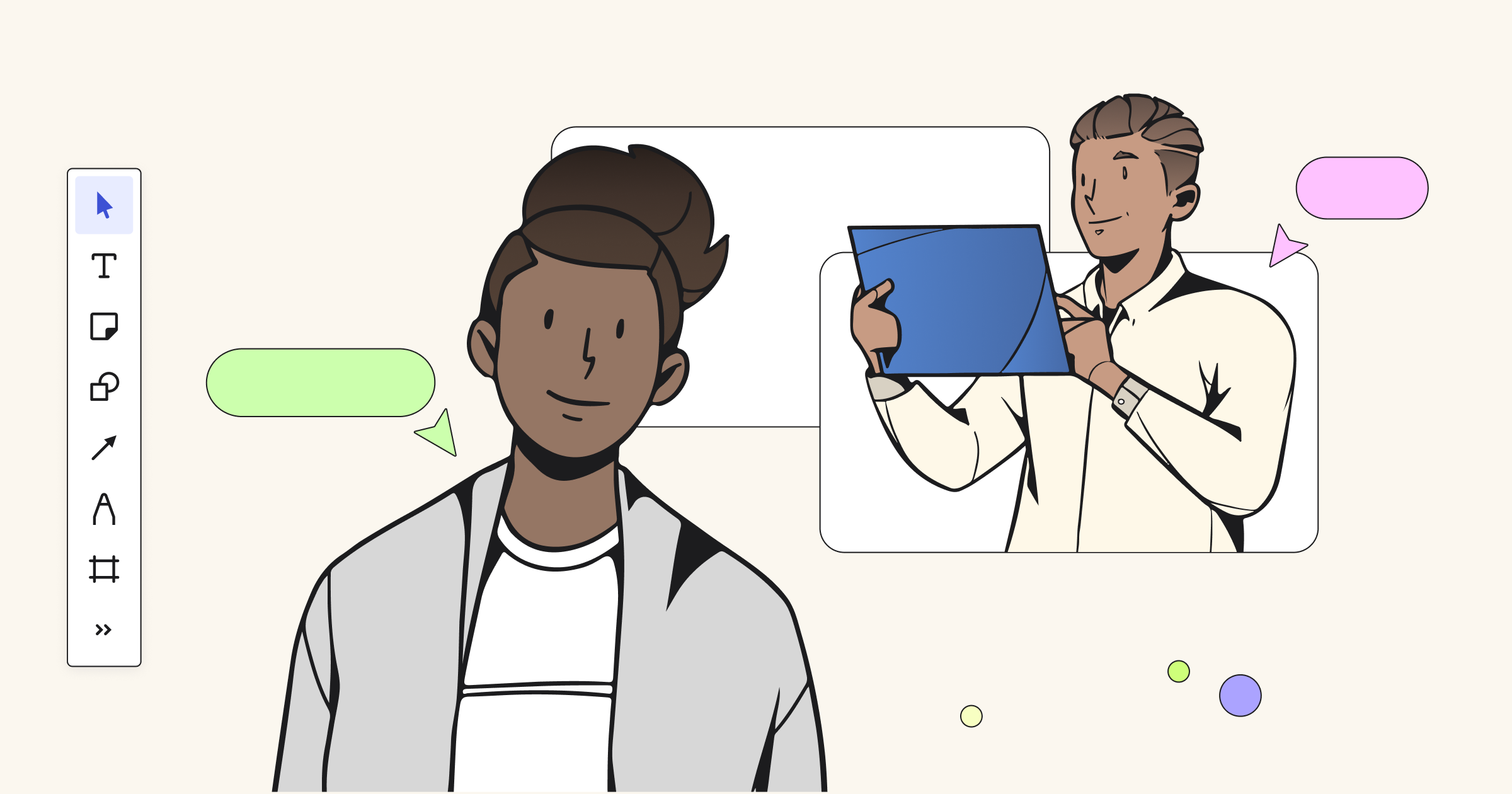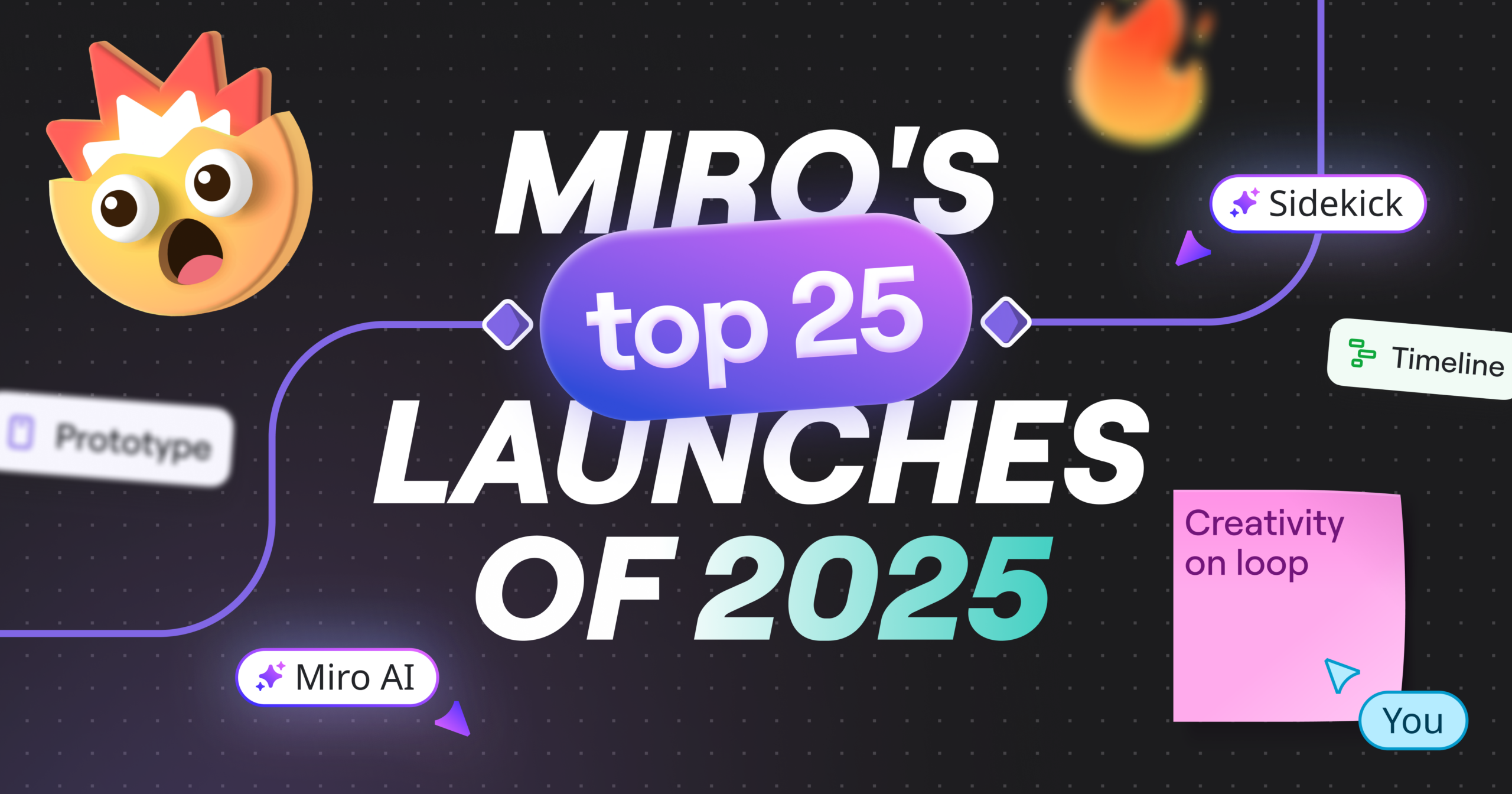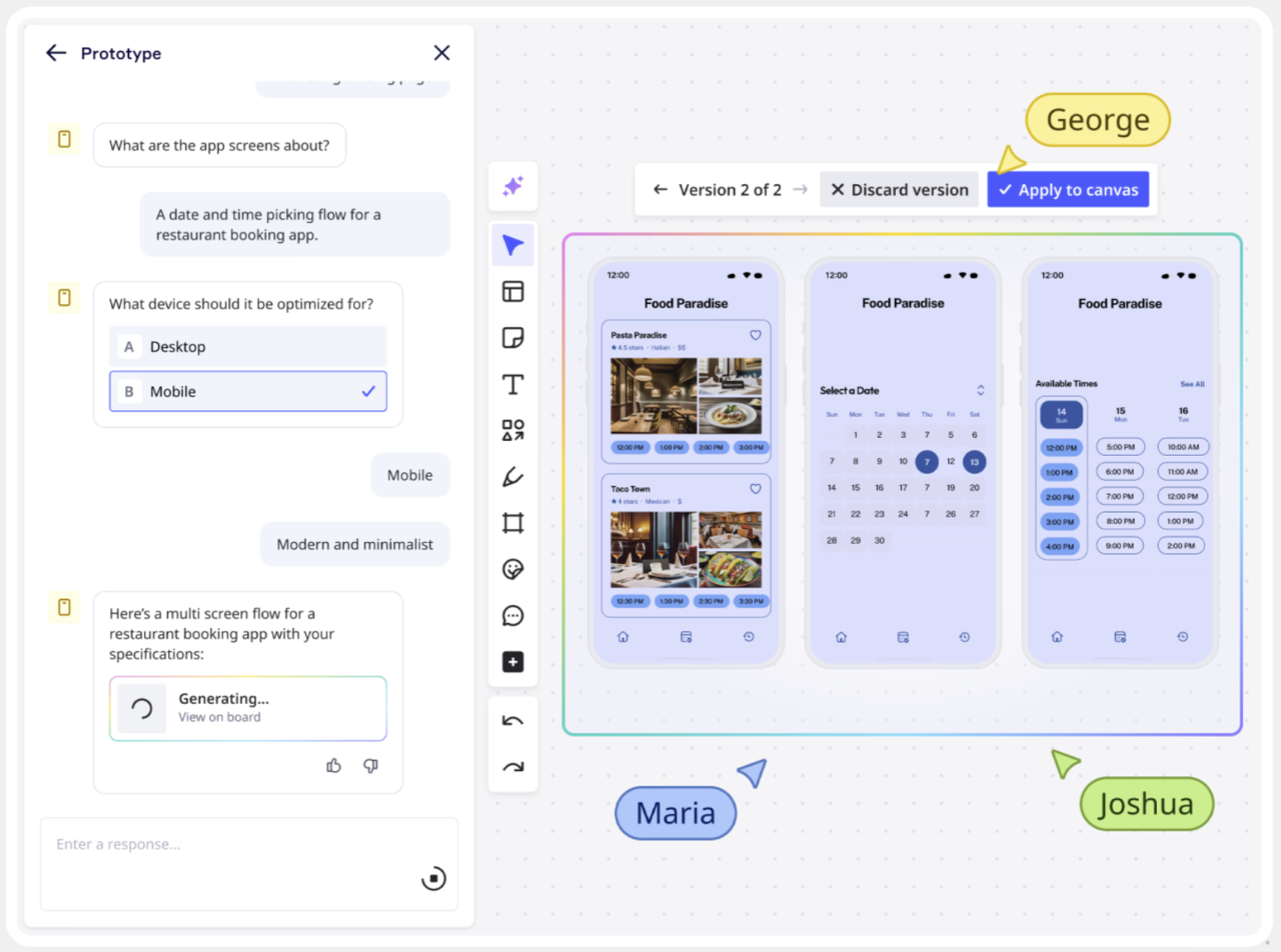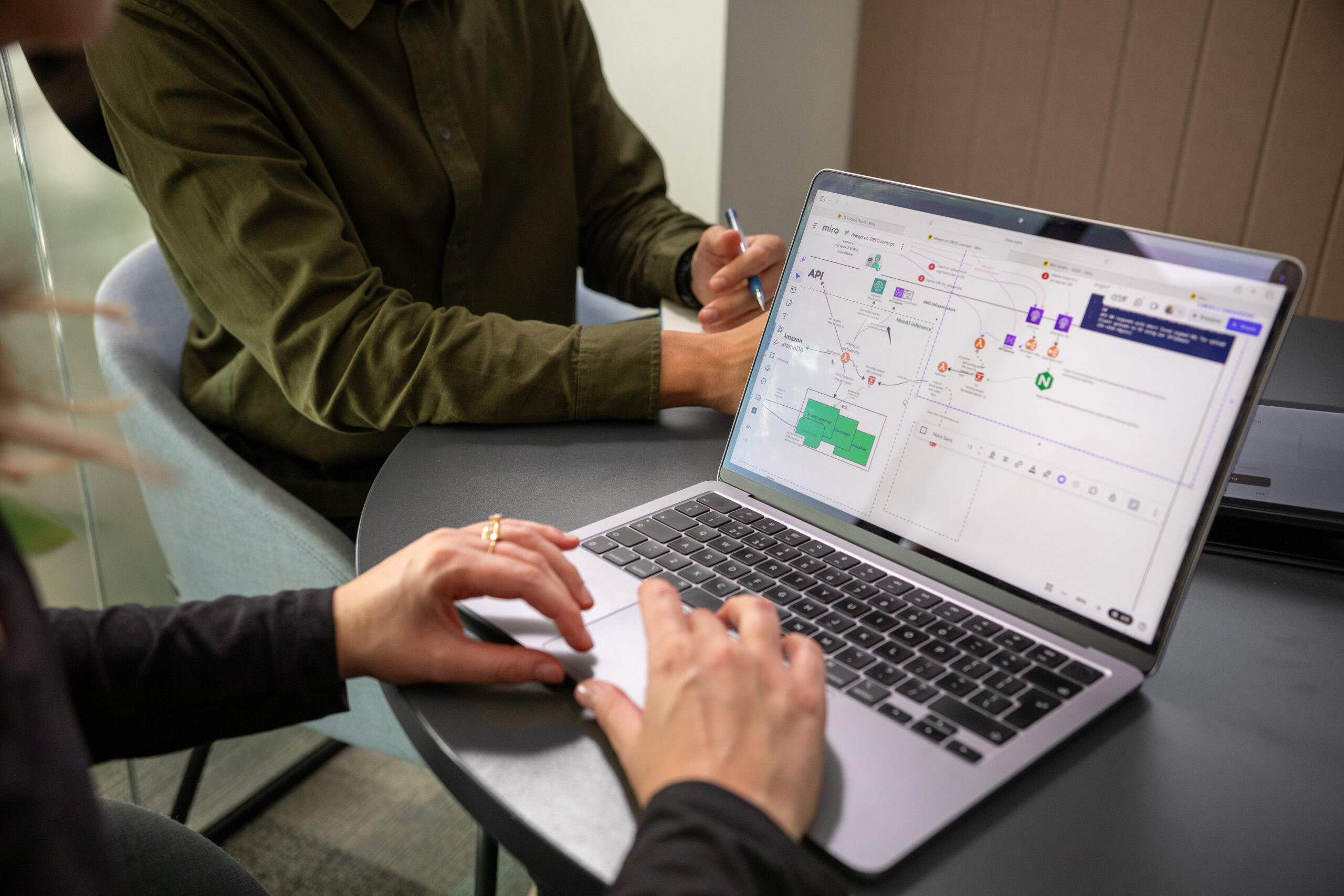How our clients, Amdocs, Mingle Analytics, and Nikos Raptis, an independent Scrum Master, adapted their Retrospectives to a distributed reality
Scrum Masters are usually great at facilitating sprint retrospectives in person with their team, but what if someone on the team works remotely? Read how our clients, Amdocs and Mingle Analytics, and Nikos Raptis, an independent Scrum Master, adapted their Retrospectives to a distributed reality.
We know from our customers that the most popular solution for building a physical presence for remote team members is to set up a camera that shows the wall or a whiteboard. But in reality, video conferencing presents even more potential pitfalls: bad internet connection, inability to participate in full, and low levels of remote team engagement.
What is a sprint retrospective?
A Sprint Retrospective is an opportunity for the Scrum Team to inspect itself and create a plan for improvements to be enacted during the next Sprint. The Sprint Retrospective occurs after the Sprint Review and prior to the next Sprint Planning. This is at most a three-hour meeting for one-month Sprints.
Why run one?
By the end of the Sprint Retrospective, the Scrum Team should have identified improvements that it will implement in the next Sprint.
How to run one
- Inspect how the last Sprint went with regard to people, relationships, processes, and tools.
- Identify and order the major items that went well and potential improvements.
- Create a plan for implementing improvements to the way the Scrum Team does its work.
Challenges
- Inability to provide remote team members with a physical whiteboard, paper or sticky notes to actively participate in the session
- Remote team members don’t have access to the Retrospective games
- No central hub to store all the Retrospective results
- Maintaining transparency and ensuring the information remains available even after the Retrospective
- Making sure the Retrospective information remains private
Useful Miro features:
- Digital sticky notes
- Pre-made templates
Customers’ examples
Amdocs’ Scrum Team created a custom Retrospective template. The team fills it in anonymously before and during the meeting, elaborating on the items. The sticky note pool is created for those who want to share their feedback anonymously.
Eventually, the team votes for the most interesting items for improvement via smiley icons, trying to keep it limited to two or three. Then the team differentiates the items between those that are internal, which are in the power of the team, and external ones, which are off the ecosystem.
This is a case study by Bobbie Manson, Director of Software Engineering at Mingle Analytics, Inc. You can read the full story here.
Miro became an integral part of our Retrospectives and story point meetings, solving many of our previous challenges. With Miro we aren’t just sharing a screen or sharing a whiteboard managed by one driver – we truly collaborate.
At Mingle Analytics, Inc., we are building a dashboard that our clients use to work through the process of submitting their Physician Quality Reporting System (PQRS) data to Medicare. We use internal tools to assist employees in loading and manipulating data sent to us from our clients. Also, we are working on adding the ability to receive data for PQRS submission in other formats that more directly draw from our clients’ electronic health record systems.
We recognized early on that we would not be able to find the workforce we needed locally in South Paris, Maine, so we went looking for talented developers wherever we could find them.
Currently, Mingle Analytics’ Development Team is a distributed team of 11 developers and 4 QA analysts, spread across time zones in the United States and Poland. The amount of collaboration activities varies from 30% to 75% of working hours, so finding technology that could help us collaborate remotely is paramount to our success as a team.
Online workspace experience
Invite the stakeholders and team members, including those who are remote, to the board. To invite them to the board, open the “Share” settings.
When we hired our QA Manager, one of the first things she did was find Miro, which allowed her to document application workflows. We also discovered that Miro filled a need we had for collaboration. We have used it for Retrospectives, story pointing, design sessions and training.
Before Miro, we were using Skype for audio and video-chatting, and thought about possible whiteboarding solutions such as a camera on a whiteboard, the whiteboard tool in Skype or sharing a screen with a PowerPoint presentation, etc.
But all those solutions had many disadvantages. Mostly, they didn’t solve the challenges of remote collaboration. For example, we could not fully share artifacts like Kanban boards, burn down charts, definition of “Done,” etc.
In just a couple of days, Miro became an integral part of our Retrospectives and story point meetings, solving many of our previous challenges.
The image below shows a Retrospective result, where each person used comment cards to create items they liked, loved, longed for or learned in the iteration. Each person got three votes to place as they wished on items they felt we should concentrate on. The comment card with the most votes was then used as the source for gathering possible action items to achieve this goal. Participants had one vote to determine which we would implement in the next iteration.
Mingle Analytics team Retrospective results
We also run a Retrospective closing activity, where we have a visual of us all sitting around a virtual table. We pass the ball to someone and that person states something they learned in the iteration or something that someone did for them in the iteration. A person can take their turn and then pass the ball to someone else. We’ve done other activities where you have to know who is to your left and who is to your right, so this is a good visual when you aren’t actually there to see us all at a table.
Retrospective closing activity
For our business, our distributed team relies on frequent collaboration to keep up with an ever-changing Medicare process and unique client needs. Miro certainly helps us get there.
This is a case study by Nikos Raptis, a Scrum Master, who adopted a Retrospective event for his remote team members. You can read the full story here.
A couple years ago, the company I was working for faced the challenge of adapting their processes for a remote team. In the beginning, the team was collocated, so we were able to use physical boards in a common meeting room to do our exercises.
After each Retrospective, I took a picture of the physical boards in order to recreate them along with the drawings. This was time consuming and boring, but necessary because the boards were re-used after our Retrospective by different teams to do their own Retrospectives.
Six months later, two new remote members were added to the team, so we couldn’t continue to conduct our Retrospectives in the same way. Somehow, we had to make sure they were seeing the same things and could collaborate by adding notes to the boards.
This was when I discovered Miro – exactly the tool we needed to solve our issues.
Collaborating with remote team members
The critical part of a Retrospective is the action taken. For this, there are several exercises that a team can use. Personally, I prefer the sailboat.
Miro allowed us to continue using the same exercises, and, since it’s online, anyone could access them from anywhere. We could share the board with any spectator we wanted, to write comments or provide solutions to issues found in the Retrospectives.
In addition to the various design options that Miro has, one important thing for us was that it allowed us to export and store the board’s current status before every Retrospective. That gave us a history of how things evolved over time, and, after some months, we were able to do an analysis of how we performed in terms of identifying and solving issues.
Running a Sprint Retrospective with a distributed team can be fun when you use a robust tool that your whole team is familiar with. In my experience, online whiteboards can help deal with the challenges associated with a distributed team. In our case, Miro really helped us:
- Enable remote team members to actively participate in the Retrospective meetings
- Keep all the recorded information from the Retrospective online and available for every team member (local or remote)
- Prevent people outside the team from having access to the information the team wanted to keep private.
How to set up Sprint Retrospectives in Miro
Add your previous Retrospective results to the template by using digital sticky notes. You can find a collection of the Retrospective templates in our template library. Simply press the “plus” icon on the left toolbar > Templates > e.g. “Quick Retrospective.” Or create a custom template using shapes, sticky notes and text.
Create a new board and invite your team members by opening the “Share” settings. When they accept the invitation, every individual edit is viewable and saved.
Useful tips
TIP 1
Connect your offline whiteboard with Miro
If you did a previous Retrospective on a physical whiteboard using sticky notes, simply transfer the results to Miro. Open the Miro mobile app for iOS or Android and choose the “capture notes” feature to take a picture of the paper sticky notes, which will then be recognized as digital stickers on the online whiteboard.
TIP 2
Organize voting sessions to choose the most important ideas to implement
To organize a voting session, open the menu on the board in the bottom-left corner and choose the “voting” icon. The voting panel will pop up. Enter your voting session name, set a duration and determine the number of votes per person. Start a session. The winning ideas will be listed on top of the voting panel.
TIP 3
Organize anonymous Retrospectives
If you want to collect honest team feedback, add a pre-made Retrospective template to the board with empty stickers and invite your team. Team members can log in before the Retrospective and leave their feedback.
Miro visual templates guide
During a Retrospective, conversation goes smoothly when collocated and remote team members are visually involved. We hope that our clients’ examples prove this. Besides the visual aids, online whiteboards provide a secure environment for running Sprint Retrospectives that can easily be accessed by an entire team, no matter where they are located.
The bottom line
We hope that this guide provides you with answers about how each step of the Agile Scrum approach can be enhanced for a collocated team or adapted to a remote reality by including modern tools for visual collaboration, such as Miro. With the help of this tool, you can not only add visual aids to the process, but create the phygital environment important for a team to achieve the best possible results. We’ve seen the results for ourselves and our customers, and think you, your team and your management will enjoy the benefits of our platform.




